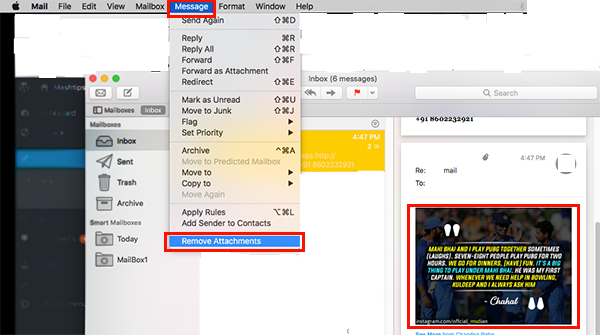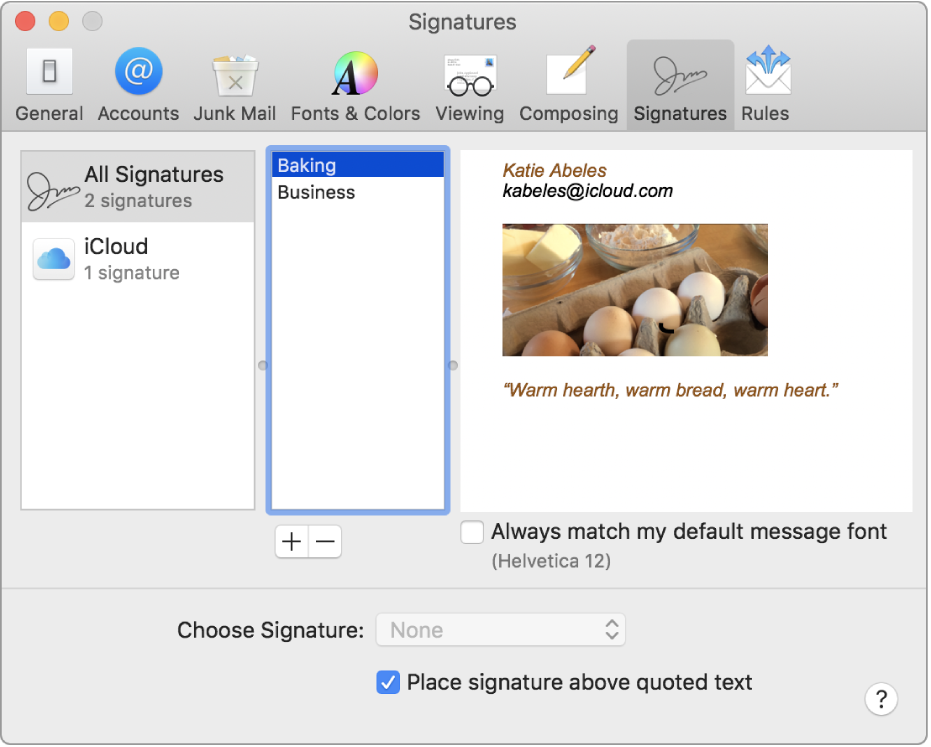Jul 22, 2015 Even though the Mail app is designed for touch, using it with a keyboard and mouse is completely natural and fluid. It's a clear interface that works well in either scenario. Aug 24, 2016 Forcing the Mail app would make a connection with the email server immediately to retrieve the email the user has been waiting for. There are several different ways to force the Mail app in Mac to retrieve an email immediately. The methods to refresh mail app on Mac are described here: #1: Keyboard Shortcut to Check For New Email on Mac.
A fresh install of Windows 10 offers a number of software solutions, including one for email and calendar. Windows Mail is one-half of an email account and calendar offering — the other being Calendar — and is a lightweight app designed to handle multiple accounts and fairly moderate email use.
But is it worth switching to Outlook, and who is suite designed for?
To those who have already used a version of Outlook in the past, the Windows Mail app will come across as a lightweight variant with some features omitted from the experience. The main difference between Outlook and the Mail app is the target audience. The bundled app with Windows is meant to cater to consumers and those who check their emails on a daily basis. Outlook on-the-other-hand is for business and professionals who rely on email.
But just because the Windows Mail app is more basic than Outlook, it doesn't necessarily mean that it's a worse experience. The app itself is a solid client for email, and the accompanying calendar app will handle events, subscriptions to cloud-based calendars just fine. A neat feature of the Mail and Calendar apps is the design language, which fits in comfortably with Windows 10.
Various accounts can be added to Windows Mail, including Outlook.com, Exchange (Office 365), Gmail, Yahoo! Mail, iCloud, as well as usual POP and IMAP accounts. Using Microsoft's hosted email services like Outlook.com will ensure everything is configured and synchronized without much effort. Simply enter your account credentials, and the app will handle everything else. Other service providers may require additional steps.
Thanks to its free, basic feature set, the Windows Mail app has been designed and developed to take full advantage of touch support on tablets and laptops. It's possible to utilize the on-screen keyboard and use the app to filter through messages and reply to contacts.
One issue I continue to experience, as well as other Mail app users, is the problem with mail synchronization. Attempting to synchronize all accounts can result in errors, which is not only irritating but requires troubleshooting. Contact integration from connected profiles isn't perfect either, but again this is a more streamlined app and it's possible to hit up contacts when creating (or replying to) emails.
I also dislike the fact you need to switch between apps for mail and calendar appointments. But it is free, so there's that huge plus, and not everyone shares my view.
Pros:
- Great touch support.
- Easy to use.
- Free, bundled with Windows 10.
- Fluent Design.
Cons:
- Basic.
- Issues with mail sync.
- Separate apps for mail and calendar.
Professional Outlook
Outlook is Microsoft's premium email client and is regarded as one of the best in the business. There's a good reason for this as the suite has been around for many years as part of Microsoft Office. The company has had time to invest in developing improvements to take the experience to the next level and increase productivity. While the Windows Mail app may just do the job for daily or weekly email checking, Outlook is for those who rely on email.
As well as the powerful email client, Microsoft has packed in calendar, contacts and task support. Simply switch between tabs and everything is loaded up. Office integration is also present, as one would expect from a more connected suite of productivity tools. Then there's the Ribbon system that hides away the countless buttons and features that do pretty much everything one would require.
Take a look at some of the feature discrepancies to see if there's anything you require that cannot be done in the Windows Mail app:

| Feature | Outlook | Windows Mail |
|---|---|---|
| View/Send mail from Shared Mailboxes | Yes | No |
| Access to Public Folders | Yes | No |
| Categorize messages | Yes | No |
| Ignore conversation | Yes | No |
| Clean up thread | Yes | No |
| Apps for Office | Yes | No |
| Unsubscribe to mass emails | Yes | No |
| MailTips | Yes | No |
| Follow Up Flag (creating email) | Yes | No |
| Send email as plain text | Yes | No |
| Create Inbox rules | Yes | No |
| Local Email storage | Yes | No |
| Contacts list | Yes | No |
| Highlight terms in search results | Yes | No |
| Open colleagues' calendars | Yes | No |
More information and comparison between the two apps can be found on Microsoft's website.
There are downsides to Microsoft's more advanced email program. The first being the plethora of features that may never be used. Do you really need to categorize messages? That and the new Ribbon UI system that Microsoft has implemented into the new Office suite isn't to everyone's liking. It can also feel rather bloated when tasked to handle thousands upon thousands of emails from multiple accounts, but that's a case of not effectively managing clutter.
Built In Mail App Mac
And don't get me started on some of the account setup issues. I've experienced the following a few times before it starts magically working for some reason. Outlook just can't seem to connect and log in when initially setting up some accounts that require manual labor, asking you to re-enter credentials a few times before finally accepting defeat and connecting everything up.

That said, it makes sense for Microsoft to offer more features in the Outlook suite to entice businesses and consumers to upgrade and pay the Office subscription, but if you don't need many of the more advanced features the Mail app will do just fine.
Pros:
- Superb feature set.
- Handles mail, calendar, contacts.
- Great filter, search and flagging.
- Integrates with other MS Office products.
Cons:
Default Mail App On Mac

- Requires Office 365 subscription.
- More complicated.
- Setting up accounts can be a pain.
- Not designed for touch.
What say you?
Do you prefer the simplicity of Windows Mail (and Calendar) or are you a fan of the more feature-rich Outlook suite? Sound off in the comments!
Mac Mail App Update
Updated on July 24, 2018: We updated this guide to take into account the latest releases of Outlook and Windows Mail and to make sure all information is up to date.
We may earn a commission for purchases using our links. Learn more.
exposure notificationNational COVID-19 server to use Apple and Google's API, hosted by Microsoft
The Association of Public Health Laboratories has announced it is working with Apple, Google, and Microsoft to launch a national server that will securely store COVID-19 exposure notification data.
-->The Microsoft 365 Reports dashboard shows you the activity overview across the products in your organization. It enables you to drill in to individual product level reports to give you more granular insight about the activities within each product. Check out the Reports overview topic. In the email apps usage report, you can see how many email apps are connecting to Exchange Online. You can also see the version information of Outlook apps that users are using, which will allow you to follow up with those who are using unsupported versions to install supported versions of Outlook.
Note
You must be a global administrator, global reader or reports reader in Microsoft 365 or an Exchange, SharePoint, Teams Service, Teams Communications, or Skype for Business administrator to see reports.
How to get to the email apps report
In the admin center, go to the Reports > Usage page.
From the Select a report drop-down, select Exchange > Email app usage.
Interpret the email apps report
Mail App Using Space Machine
You can get a view into email apps activity by looking at the Users and Clients charts.
Reset Mail App On Mac
| 1. | The Email apps usage report can be viewed for trends over the last 7 days, 30 days, 90 days, or 180 days. However, if you select a particular day in the report, the table (7) will show data for up to 28 days from the current date (not the date the report was generated). |
| 2. | The data in each report usually covers up to the last 24 to 48 hours. |
| 3. | The Users view shows you the number of unique users that connected to Exchange Online using any email app. |
| 4. | The Apps view shows you the number of unique users by app over the selected time period. |
| 5. | The Versions view shows you the number of unique users for each version of Outlook in Windows. |
| 6. | On the Users chart, the Y axis is the total count of unique users that connected to an app on any day of the reporting period. On the Users chart, the X axis is number of unique users that used the app for that reporting period. On the Apps chart, the Y axis is the total count of unique users who used a specific app during the reporting period. On the Apps chart, the X axis is the list of apps in your organization. On the Versions chart, the Y axis is the total count of unique users using a specific version of Outlook desktop. If the report can't resolve the version number of Outlook, the quantity will show as Undetermined. On the Versions chart, the X axis is the list of apps in your organization. |
| 7. | You can filter the series you see on the chart by selecting an item in the legend. For example, on the Users chart, select Mac mail or Outlook to see only the info related to each one. Changing this selection doesn't change the info in the grid table. Mac mail, Outlook for Mac, Outlook mobile, Outlook desktop, and Outlook on the web are examples of email apps you may have in your organization. |
| 8. | You might not see all the items in the list below in the columns until you add them. Username is the name of the email app's owner. Last activity date is the latest date the user read or sent an email message. Mac mail, Mac Outlook and Outlook, Outlook mobile and Outlook on the web are examples of email apps you may have in your organization. If your organization's policies prevents you from viewing reports where user information is identifiable, you can change the privacy setting for all these reports. Check out the How do I hide user level details? section in the Activity Reports in the Microsoft 365 admin center. |
| 9. | Select Manage columns to add or remove columns from the report. |
| 10. | You can also export the report data into an Excel .csv file, by selecting the Export link. This exports data of all users and enables you to do simple sorting and filtering for further analysis. If you have less than 2000 users, you can sort and filter within the table in the report itself. If you have more than 2000 users, in order to filter and sort, you will need to export the data. |